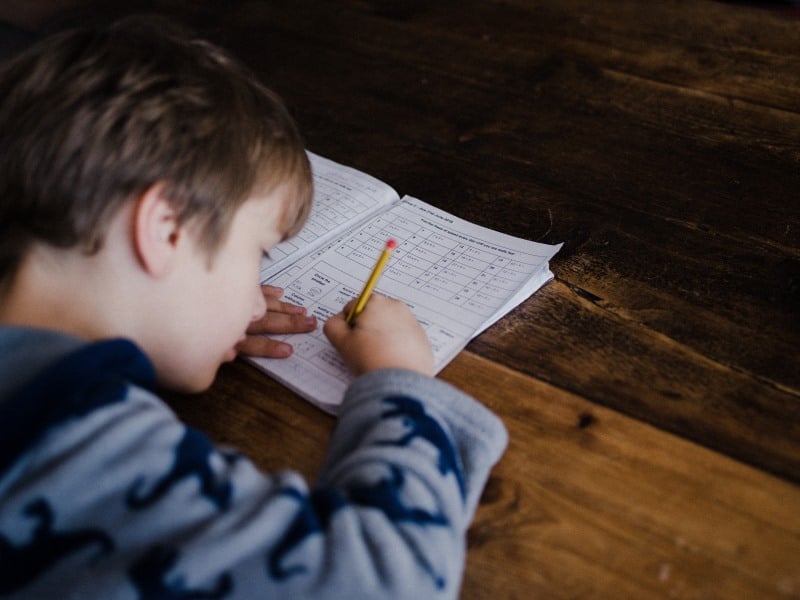As your child advances in school, they will come to a few stumbling blocks. There are some problems that can prove difficult for a lot of students to understand. The most common issue is with math word problems. Students struggle with seeing the math behind the words or can become confused with the extraneous information in front of them. The issue isn't necessarily with their math skills, but with their analytical skills.
A proven step-by-step method for solving word problems is actually quite simple:
 Read the problem out loud to yourself
Read the problem out loud to yourself- Draw a picture
- Think “what do I need to find?”
- List what is given
- Find the key words
- Solve
- Check your work
Here’s an example word problem: Kevin loves to read. He likes many different types of books. He has 6 large bookcases that each have 5 shelves on it all filled with his books. If each shelf can hold 12 books, how many books does Kevin have?
Read the Problem Out Loud
Kids have a tendency to rush through problems, sometimes due to time limits on classwork and tests. If your child does not know what the problem is asking, then they cannot solve it. When your child reads the problem aloud, they are saying and hearing the problem at the same time, forming a clearer picture in their head and becoming more prepared to solve it.
Draw a Picture
Many students (and adults) need to visualize a problem to understand it, especially younger students. As they get older, they can start to visualize in their head, but at a young age most children should be drawing out a picture that explains to them what the problem is about. The picture should take into account all of the aspects of the problem.
Ask “What Do I Need to Find?”
Some word problems are straightforward with their questions. It can be as simple as “Molly has two dogs, Jason has three. How many dogs do Molly and Jason have together?” This one, however, we have to think about. There is more than one step for this problem. We first have to find how many shelves he has and then find out how many books are on all of the shelves to know how many books he has altogether.
List What is Given
It is always good to start with listing the things you know. If you try to solve the problem without knowing what tools you are given to solve it, you will not get the right answer. Think about the last time you tried to fill in the blanks or assume an answer without knowing all the facts. Your outcome probably did not turn out well. It is for this reason that we need to list what is given before any problem. The student should write it down at the top or side of the scrap paper so they always have it as a reference when doing the problem. For this problem, my list of what is given would be: Kevin has 6 bookcases; each bookcase has 5 shelves; and each shelf holds 12 books.
Find the Key Words
Every word problem has key words to look out for that tell you what operation to do, like “all together” or “total” for addition. As your child gets more practice with word problems, finding the key words will get easier.
Solve
For the example here, your child will need to use multiplication. First, they should multiply the number of shelves per case by the number of cases: 5 shelves per case x 6 bookcases = 30 shelves. Next, they should multiply the number of books per shelf by the number of shelves: 30 shelves x 12 books per shelf = 360 books.
Check the Answer
The last step is for your child to check their work by seeing if the answer fits the question asked. Mathematically, we can check our work by doing the opposite of whatever operation we used. For this example, we can divide 360 by 12 and we will get 30, then divide 30 by 5 and get 6.
As challenging as word problems can be for children, having them follow these simple steps will help them better understand word problems and see beyond the complicated words. Soon enough, world problems will not be so troubling for them after all and they will grow to become more confident, eager learners.
If your child is still having trouble with word problems, it can be helpful to enroll them in Math Genie. The program at Math Genie is designed to help children not only catch up to what they’re learning in school, but to surpass their classmates. The teachers give guided practice and helpful feedback, building your child’s skills and confidence at the same time.
Source: https://courses.lumenlearning.com/prealgebra/chapter/apply-a-problem-solving-strategy-to-basic-word-problems/





